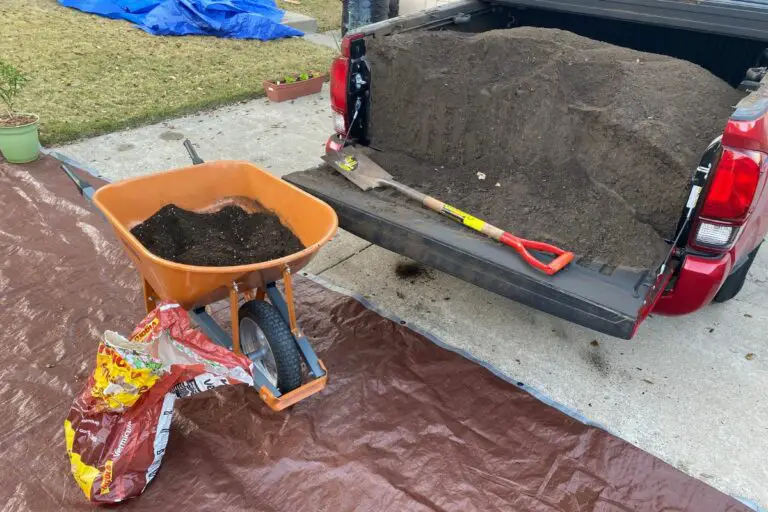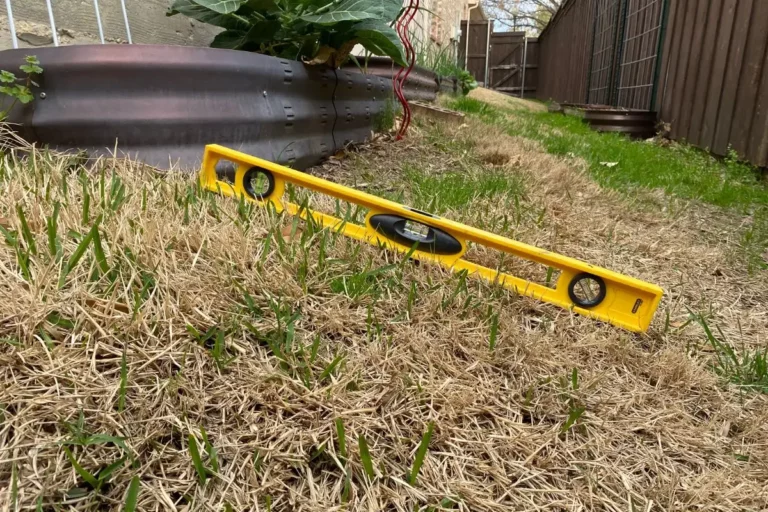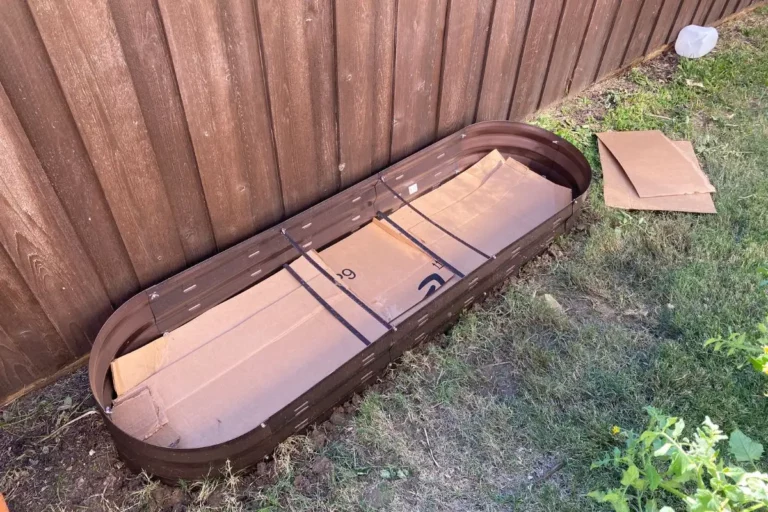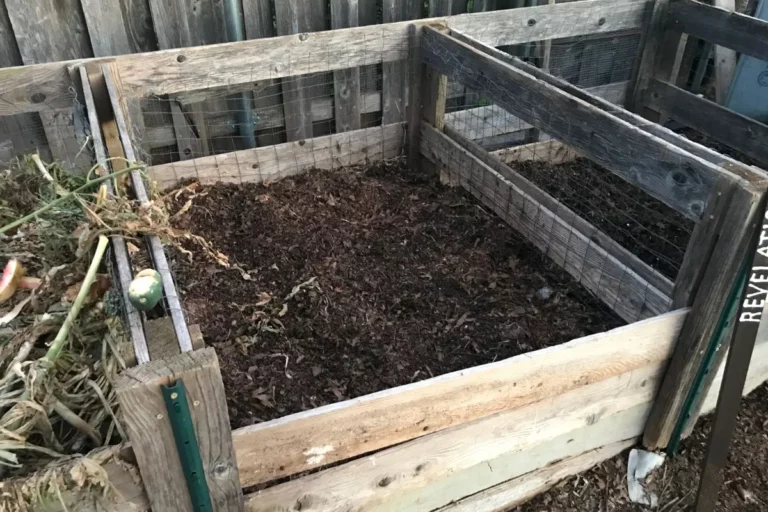32 Must-Try Vegetables For Your Raised Garden Beds
Growing your own food is not only a great way to save money, but it’s also a fantastic way to enjoy fresh and nutritious produce.
But which vegetables are best for raised beds? And which should you avoid?
The best vegetables to grow in raised garden beds include beans, carrots, cucumbers, eggplants, lettuce, peppers, radishes, spinach, tomatoes, and turnips. These plants thrive in well-drained soil and full sun and add a variety of flavors, colors, and textures to your meals.
Raised garden beds are a convenient and effective way to grow your own vegetables, regardless of the size of your outdoor space.
In this blog post, I’ll explore some of the best vegetables to grow in raised garden beds and provide tips on how to get started.
Toward the end, I’ll also share a list of plants you should always keep out of your raised beds because they either won’t thrive there or they’ll take over and cause you headaches as time goes on.
My Favorite Vegetables to Grow in Raised Beds
Here’s a list of my all-time favorite vegetables to grow in raised garden beds:
- Arugula
- Basil
- Beets
- Broccoli
- Cabbage
- Carrots
- Cauliflower
- Chives
- Cilantro
- Collard Greens
- Cowpeas
- Cucumber
- Dill
- Eggplant
- Garlic
- Green Beans
- Kale
- Kohlrabi
- Lettuce
- Loofah
- Okra
- Onions
- Peas
- Peppers
- Potatoes
- Radishes
- Spinach
- Squash
- Swiss Chard
- Tomatoes
- Turnips
- Wing Beans
Arugula
Looking to add a unique and flavorful ingredient to your garden? If so, go with arugula. It’s a fast-growing plant and can be harvested within just over one month.
Plant the seeds 1/4 inch deep in your raised bed and make sure it gets ample sunlight (full sun to partial shade). Water regularly for best results. Raised beds are ideal since you can practice square foot gardening with your arugula. Plant 4 per square foot for ideal yields as the season goes on.
Basil
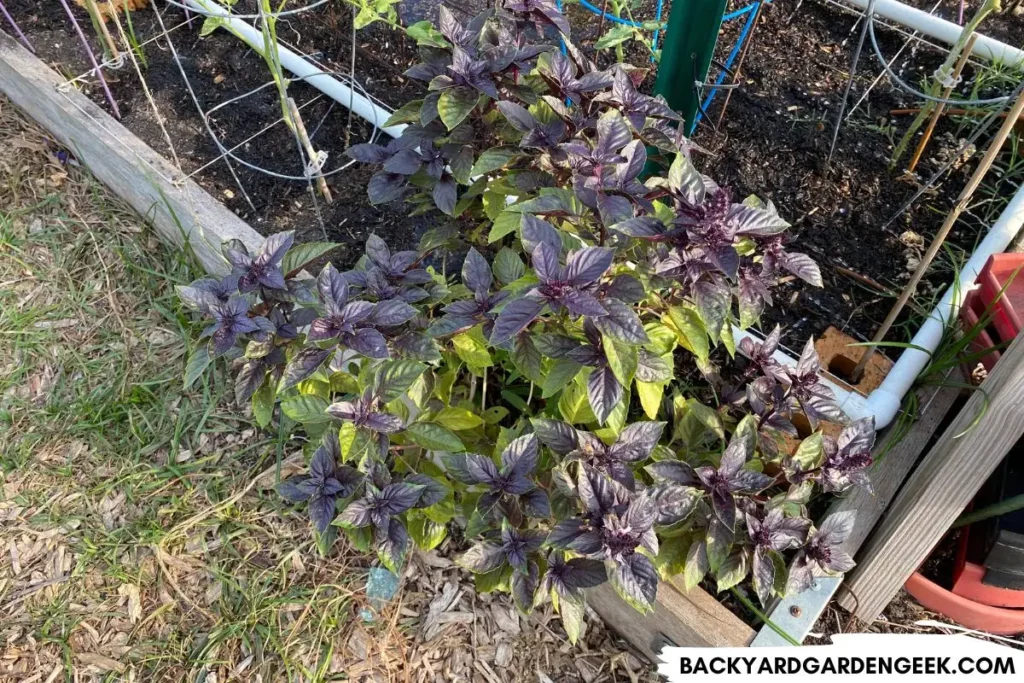
If you’re looking to spice up your garden with some delicious basil, plant the seeds or seedlings about 4-6 inches apart. I prefer to do so around the perimeter of my raised bed since certain pests don’t love basil all that much and will want to steer clear of it.
Basil loves basking in full sun and requires regular watering for optimal growth, so don’t let your soil dry out!
If you see your basil trying to go to seed, pinch the tips off so that you can keep picking the leaves on a consistent basis through the growing season.
Beets
Beets are a nutritional powerhouse with loads of sweet, earthy flavors. Growing them in raised garden beds is easy since they don’t need much space at all.
Plant the seeds 1/2 inch deep at 2-inch intervals, then thin out seedlings when mature enough. You can fit 9 plants per square foot, but you’ll want to plant several square feet worth of plants for ongoing harvests.
You can also harvest young greens earlier if desired. Just cut off the outer leaves and add as needed to any dishes you’re preparing.
Broccoli
This cool-season vegetable does great in raised garden beds. Just make sure you don’t plant your seedlings too close to each other. As they grow, they need plenty of space to mature.
Space them 18 or so inches apart and mulch around them very well since they like moist soil. This way, you’ll keep their roots happy.
When it’s time to harvest, take a look at the central head of the plant and make sure it’s firm and tight. This usually happens 75-85 days after planting. Don’t wait too long, or the head will begin bolting. When this occurs, every little flower starts to open up. This is quite pretty, but it means your broccoli is no longer suitable to it.
Cabbage
Cabbage is a leafy vegetable and member of the cruciferous family. It’s high in nutrients and rich in vitamins and minerals.
Like broccoli, plant your cabbage seedlings at least 18 inches apart since they need room to grow and mature. Full sun exposure and consistent watering are preferred growing conditions for cabbage, and mulching around the plants can help conserve moisture and protect the roots from temperature fluctuations.
The heads of the cabbage plant can be harvested when they’re firm and tight, typically 70-80 days after planting. Don’t wait too long to harvest your cabbage. If you do, the plant could go to seed.
Carrots
I love carrots, but they’re a bit of a pill to germinate here in Texas. Once they germinate, they’ll grow well, but getting then to do so, then keeping them happy as they mature, is a tricky matter given the climate we’ve got here.
Start by sowing the seeds 1/4 inch deep and 1-2 inches apart. You might even cover the soil with a piece of cardboard for the first few days to ensure it doesn’t dry out one bit (since that’ll throw a wrench in your germination efforts).
As the seedlings emerge and grow, thin them to 2-3 inches apart and provide consistent watering. You can plant roughly 16 plants per square foot as long as you space them evenly.
Carrots can be harvested in 70-80 days, when the roots have reached maturity. Additionally, you can harvest carrot greens along the way. Just be sure not to harvest too many greens from any single plant or else you might stunt its growth.
Cauliflower
Cauliflower is a wonderful addition to your raised garden bed. It’s got a mild, nutty flavor, and it’s great for roasting, mashing, or adding to soups and stews. I prefer roasting them in my air fryer. Deliciously crunchy every time.
Much like broccoli and cabbage, you should plant the seedlings at least 18 inches apart in an area of your garden that gets at least 6-8 hours of sunlight per day. Mulch heavily around the plant since, like broccoli, it likes nice, moist soil. I usually put at least 2-3 inches of mulch around my plants.
The heads of the cauliflower plant can be harvested when they’re firm and tight, typically 75-85 days after planting.
Chives

Chives have a nice, delicate onion flavor, and you can use them in tons of dishes or as a decorative garnish.
Unless you’re a huge fan of chives, you don’t need many plants in your raised beds, maybe 2-3 max. Plant your seedlings 6-8 inches apart because they’ll grow much larger as time goes on. The plant prefers full sun to partial shade, so you can plant them just about anywhere in your garden.
As the plant grows, just snip off what you need with scissors whenever you want to use some of it. Regular trimming can also encourage bushier growth and promote the continued production of new leaves. Just don’t trim off too much at once since that could hinder ongoing development.
Cilantro
Cilantro is a wonderful addition to Mexican cuisine with its fresh, citrusy flavor and its use as a primary ingredient or garnish.
To cultivate cilantro, seeds should be sown 1/4 inch deep and 1-2 inches apart in soil that’s kept nice and moist. The herb prefers full sun to partial shade exposure and consistent watering, and it does best when it’s cooler outside.
Cilantro is fast-growing, ready for harvest in as little as 30 days, but you’ll have to sow new seeds every few weeks to ensure a continuous supply since it’ll bolt quickly as time goes on.
Collard Greens
Collard greens are a new favorite in my house. When cooked with onions and bacon and left to simmer for an hour or so, they’re a perfect addition to all kinds of meals.
To cultivate collard greens, plant seedlings 24 inches apart since the plants can get quite massive depending on the variety. The greens prefer lots of sun and do just fine in both cool and warm weather.
In fact, I kept one of my collard greens plants alive for over a year once. I planted it in spring, nurtured it through 100-degree days in July and August, then protected it from freezing temperatures during the winter. It never even went to seed during all that time!
Harvest the outer leaves regularly to ensure a continuous supply, but avoid over-picking the leaves since that can actually end up stunting your plant’s growth.
Cowpeas
Cowpeas (also known as black-eyed peas) are a nutritious legume crop that’s great when harvested as both pods (when they’re small and thin) or edible seeds (when the pod is larger and more mature).
In order to cultivate cowpeas, seeds should be sown 1 inch deep and 3-4 inches apart. The plants prefer full sun and thrive in both warm and extremely hot temperatures.
Approximately 60-65 days after planting, the cowpea pods will be ready for harvest. Harvest them when they’re small and eat them as green beans or wait until the pods are larger, harvest the seeds, and cook them like you would beans.
Cucumbers
Cucumbers are a warm-season vegetable that are well-suited for raised garden beds and wonderful for salads, pickling, and snacking.
To grow cucumbers, plant your seeds 1 inch deep and 8-12 inches apart. Cucumbers need lots of support, so make sure your raised beds have a trellis of some kind that the vine can grow up. When mature, cucumbers can be harvested once they’re an appropriate size, typically 50-70 days after planting.
Dill
Dill is a fantastic herb that’ll provide all you need to pickle your cucumbers, onions, and other veggies.
Dill plants are easy to grow from seed. Simply plant your seeds 1/4 inch deep, then transplant the young seedling once it’s 3-4 inches tall or so.
This plant is a fast-growing one and will be ready to harvest in as little as 40 days. You won’t ever need much at one time, so just harvest as needed. Let the plant go to seed eventually, and you’ll easily get 100+ seeds from a single plant.
If you let the plant go to seed in its place, then drop its seeds, you’ll have tons of little dill plants coming up once the weather and soil temperatures signal to the seeds that it’s time to grow.
Eggplant
Eggplants start off small but can grow quite large, so be sure to plant them 24 inches apart.
These plants don’t necessarily need support, but they’ll do better if you stake them up and keep their branches supported, especially if you’re growing the larger eggplant varieties.
Plant eggplant seedlings 18-24 inches and make sure they get plenty of sun. When the eggplants are firm and have reached their desired size, usually 60-80 days after planting, go ahead and begin harvesting them.
Garlic

Garlic is a cool-season vegetable that is well-suited for raised garden beds. I like planting garlic around the edges of my raised beds because bugs aren’t a fan of them.
Plant garlic cloves 4-5 inches apart and then wait and wait and wait. After 7-8 months of waiting, you’ll notice that the tops begin to yellow and fall over.
When that happens, dig up a bulb to make sure everything looks as you were hoping it would look. If it does, harvest your crop, then tie your garlic bulbs up in a dry place and let them cure for a few weeks before storing them.
Green Beans
Green beans are marvelous for roasting, steaming, and adding to salads and stir-fries, and they’re relatively easy to grow in raised beds, whether you’re growing bush or pole varieties.
Sow green bean seeds 1 inch deep and 3-4 inches apart. Bush varieties don’t need much in the way of support, but pole varieties do. You’ll need to give the vines plenty of space to grow so that you can harvest beans week after week, usually 50-65 days after planting.
Kale
Kale is a cool-season vegetable that’s well-suited for raised garden beds. I love to sauté or roast my kale, and I particularly enjoy putting it in the air fryer for a quick snack.
Plant kale seedlings 6-12 inches apart, and they’ll do just fine as time goes on. Some varieties will get larger than others, but no matter the variety, grow several plants at once so that you can pick a few leaves here and there.
By doing so, you’ll have kale all season long since you won’t deplete any one plant entirely.
Kohlrabi
Kohlrabi are great for raised beds. I start mine indoor, then carefully transplant the seedlings when they’re a few inches tall.
Over time, the plant will develop mature leaves and a bulbous head that sits atop the soil. In 2-3 months, you’ll be able to harvest those heads, but they’re not very large, so if you want plenty of kohlrabi this year, make sure to plant several plants in your raised beds.
Lettuce
Lettuce is a cool-season vegetable that does fantastic in raised garden beds as long as you plant enough so that you don’t go through it all too quickly!
I think the best way to grow lettuce is to start it from seed indoors. Once the lettuce seedlings are 2-3 inches tall, transplant them into the garden and space them apart 4-5 inches or so.
Lettuce grows best in full sun to partial shade and is a relatively fast-growing crop that you’ll be able to harvest in 40-50 days or so. Harvest only the outer leaves so that the plant itself will continue to grow, providing you with additional harvests as time goes on.
Loofah
Unless you want loofah to overrun your garden, I recommend taking great care and giving it lots of thought before you plant these plants in your raised beds.
However, if you’ve got a nice trellis system by your beds or a fence that runs alongside them, you’ll have plenty of room for the loofah plant to spread as it grows.
Loofah plants needs lots of time to mature, develop, then dry on the vines, so you’re looking at around 120 days before you’ll have a chance to harvest any loofah plants.
Okra
Okra loves the warm summer months, and it’ll do amazingly well in raised beds.
Direct sow okra seedlings 12-18 inches apart. They don’t need any staking or support since the plants will develop thick stems. You’ll see flowers start to develop, then okra pods will appear soon thereafter.
Ants love to crawl around okra plants, so if you see ants on your okra, you’ll want to figure out why they’re there so that your plants don’t suffer in the long term.
Here are some articles to help with that:
- Do Ants Eat or Kill Aphids? 6 Environmental Factors
- Do Ants Hate the Smell of Peppermint? Here’s What to Know
- Do Ants Make Aphids Worse? 7 Behaviors to Understand
- Preventing Ants with Essential Oils + Keeping Dogs Safe
If you’ve got raised beds that are taller than 12 inches, you might need to reconsider planting okra in them. If you do, your plants might grow to be 8-12 feet tall, requiring you to pull out your ladder whenever you want to harvest the pods.
I made that mistake once, and I’ll never do so again. What a headache!
Onion

Whether long-day or short-day onions do best in your region, plant your onions every 4-5 inches or so, ideally around the perimeter of your raised bed.
Onions like at least 6 hours of sun per day, but they’ll do best in full sun. Make sure you don’t plant your onion sets too deep or else you won’t get proper bulb formation.
Plant 1 inch deep or so, then harvest the onions when the tops begin to yellow, usually 7-8 months after planting. You’ll see them bulbing atop the soil.
Just pull them up whenever you’re ready to go, then let them cure in a nice dry place for a few weeks. Those wire storage racks are perfect for onions. Just put them on top of the rack and let the greens hang below.
Peas
When planting pea seeds, start them indoors roughly 1-2 weeks before they go outside. Soak your pea seeds overnight, and you’ll have nearly perfect germination rates.
Plant the seeds 1 inch deep and 2-3 inches apart. It’ll take them 60-70 days to produce the pods that you’ll be harvesting, but you need to provide something for them to climb up.
To maximize the yield, install trellises or other supportive structures. I use cattle panels in my raised beds, which are perfect for growing peas. You can even grow them up and among okra plants if you handle the timing right so there’s enough stem for them to grab on to.
Peppers
Peppers are a perfect addition to raised beds, especially beds with full sunlight since pepper plants love a good sunbath.
Make sure your pepper seedlings are at least 18 inches apart, since they’ll grow rather larger over time. In fact, I recommend putting tomato cages around your pepper plants or small bamboo stakes that you can tie them to as they grow.
Your plants will need support as they get taller and fuller. If you don’t provide enough, the plant’s branches can break over time, especially if you’re growing larger bell pepper varieties.
If you don’t support the plant, you’ll find that some branches will grow heavy with peppers and even break under the weight.
One more thing: If you notice ants on your pepper plants, you’ve likely got a case of aphids. Check out these articles if you’d like to learn more about getting rid of aphid infestations:
- 12 Reasons Why Aphids Keep Coming Back + 3 Simple Fixes
- 21 Plants That Aphids Love to Attack + How to Stop Them
- Can You See Aphids on Plants? Spotting Early Infestations
- Do Aphids Attract Ants?
Potatoes
Potatoes are a popular root vegetable grown for their starchy, edible tubers, and unlike the recommendations from some bloggers, I think potato plants do amazingly well in raised beds.
Pull away the soil in your raised bed and plant your potatoes as low as possible. As the plants grow and mature, pile up the soil so that you eventually end up with mounded plants.
If you do so, you’ll have lots of tubers underneath the soil 7-8 months after you plant your seed potatoes. Just wait until foliage of the potato plant begins to yellow, then harvest the potatoes, let them dry completely, then store them for future use.
Radishes
Radishes are a cool-season vegetable that are well-suited for raised garden beds. You can grow 9 per square foot, and they’re great for adding to salads, roasting, and pickling. They have a slightly spicy flavor that adds a bit of kick to any dish.
I sow my radish seeds directly in my raised beds, placing them 1/4 inch deep and 1-2 inches apart. I’ll sow 12-15 seeds per square foot to make sure I get as many as possible, then thin them out as necessary.
Radishes do fine in partial shade, but you’ve got to keep up a consistent watering schedule so the soil doesn’t dry out. A little mulch will go a long way toward this end!
Spinach

Spinach is a cool-season vegetable that grows best in spring or fall and doesn’t really like warm weather at all since it’ll bolt when that time comes.
I start my spinach seeds indoors, then transplant the seedlings to the garden when they’re around 2 inches tall. These plants will grow quite fast, which is nice, but don’t harvest too much from any 1 plant at any given time or else you might stunt its growth or kill it altogether.
With that in mind, you’ll need to have at least 9-12 plants growing at any given time if you want to have continuous spinach during the spring and fall months.
Squash
I love squash–and used to grow it every year when I lived in New Jersey–but it doesn’t do very well in my corner of North Texas due to the prevalence of the squash vine borer in my area of the state.
But for those who don’t have SVB problems, get your seedlings going 3-4 weeks before the last spring frost, then transplant into your raised beds as soon as possible.
Make sure you leave 18-24 inches between each plant since squash plants will grow fairly large as they mature.
Squash can be harvested 50-60 days after planting, when the fruit has reached its desired size and has become firm to the touch.
Swiss Chard
Swiss chard is a leafy green vegetable that is widely grown for its huge, hearty leaves and colorful stems.
I start my seeds indoors several weeks before the last spring frost, then transplant the little seedlings once they’re a few inches tall.
Swiss chard can get large, so make sure that you leave 10-12 inches between each plant. Pick the outer leaves first, and don’t over-pick the plants since you want them to keep producing.
If you grow 3-4 Swiss chard plants at once, you’ll be able to cut off a few leaves here and there so that none of the plants ever get too depleted.
Tomatoes
A perfect addition to any raised bed, tomato plants will thrive there because they’ve got plenty of room for their roots to spread out and grow.
Start your seedlings indoors 6-8 weeks before the last spring frost, then transplant them into larger pots and eventually into the raised beds.
Determine tomato plants need nothing more than a simple tomato cage since they’ll only grow to a certain height, then stop growing and producing. Indeterminate tomato plants need plenty of support since they’ll keep growing until they’re 6-8 feet tall (or more!).
Supporting the plants as they grow is crucial as it helps to ensure that the fruits are able to develop properly. You can do so with tomato cages, bamboo stakes, or trellises. I prefer the latter since trellises offer the most options when it comes to supporting your plants.
The average harvest time for most tomato varieties is 60-80 days after planting, when the fruits are firm and have reached their desired color and size.
Tomato plants are literally my favorite plants to grow in the garden, but you’ll want to learn as much as possible since pests love them and they’re prone to disease.
Check out these articles if you want to read more about my experiences growing tomatoes, especially when it comes to pest management:
- Buying Heirloom Tomato Seeds: Where to Buy + Helpful Tips
- Buying Tomato Plants vs. Growing From Seeds: Pros and Cons
- Can You Use Neem Oil on Tomato Plants? 10 Reasons Why
- Growing Tomatoes from Hybrid Tomato Seeds: Can You Do It?
- How Many Tomato Plants Do I Need for 3, 4, or 5 People?
Turnips
Turnips are perfect for roasting, sautéing, and adding to stews and soups.
Sow turnip seeds 1/4 inch deep and 2-3 inches apart since you can grow 9 turnips per square foot of soil. Turnips are a fast-growing cool-season crop and can be harvested in as little as 30-50 days, once they’ve reached their desired size.
Turnips do best when they’re direct sown. Don’t try to grow them in seed trays since the transplant process will often damage them.
Wing Beans

Growing wing beans in raised garden beds can be a fun and rewarding experience, both for seasoned gardeners and those new to the practice.
These little beans do best when they’ve got a trellis to climb up, so plant them 18 inches apart and give them plenty of room to grow around your trellis support system.
Around 50-60 days later, you’ll have large plants with lots of pods on them. You can cook the pods whole in stir fry dishes, use them in soups, or harvest the edible seeds from more mature pods.
What Vegetables Should Not Be Grown in Raised Beds?
Now that I’ve covered the plants that you should absolutely grow in raised beds, let’s take a look at those plants that you shouldn’t put in raised beds.
The most common reason for keeping certain varieties or of your raised beds is this: They’ll take them over—sometimes slowly, sometimes very quickly.
Here’s a list of plants that you’ll want to keep out of your raised beds:
- Barley
- Bee Balm
- Blackberries
- Blueberries
- Bottle Gourd Squash
- Comfrey
- Corn
- Hops
- Lemon Balm
- Malabar Spinach
- Millet
- Mint
- Oats
- Raspberries
- Rice
- Rye
- Sorghum
- Tansy
- Tromboncino Squash
- Watermelon
- Wheat
- Winter Squash
- Yarrow
If you’d like to know why exactly you should not grow each of these plants in raised beds, check out my article on plants you shouldn’t grow in raised beds.

More Information
If you’re interested in learning more, these articles will help you learn more about gardening in raised beds:

